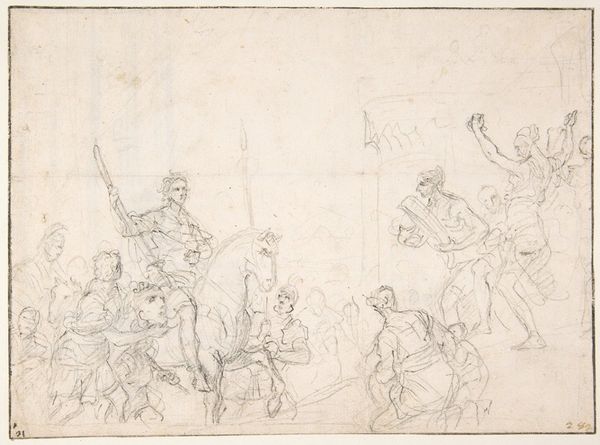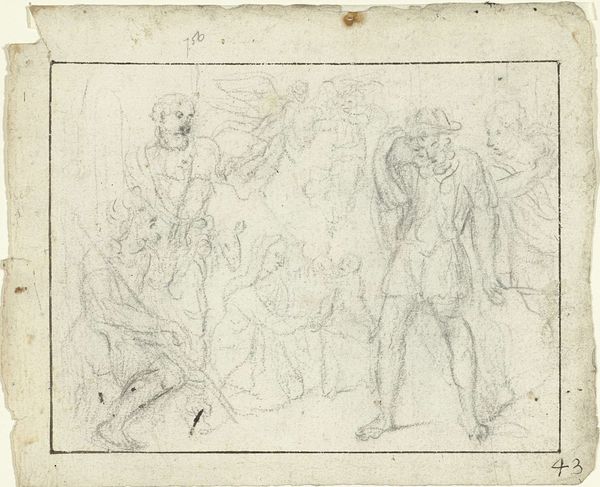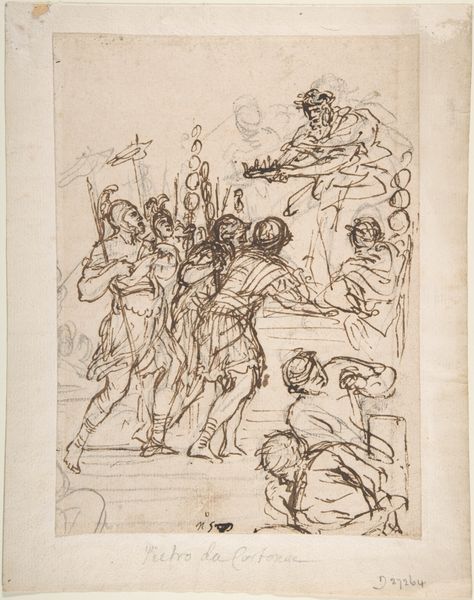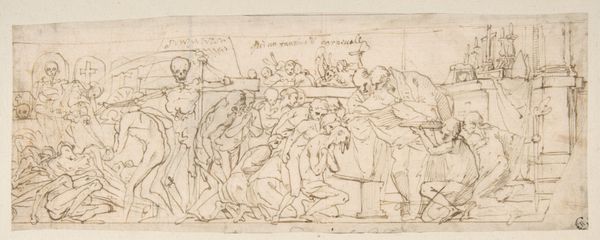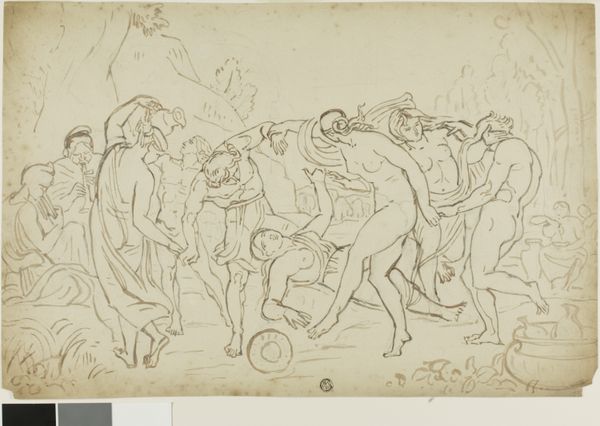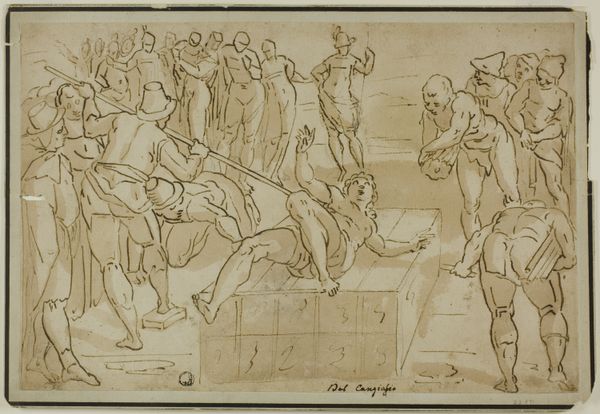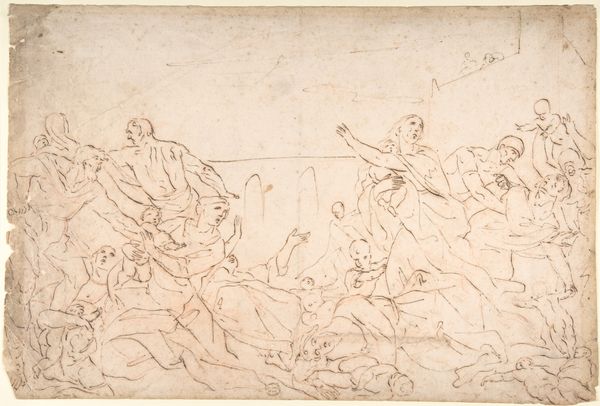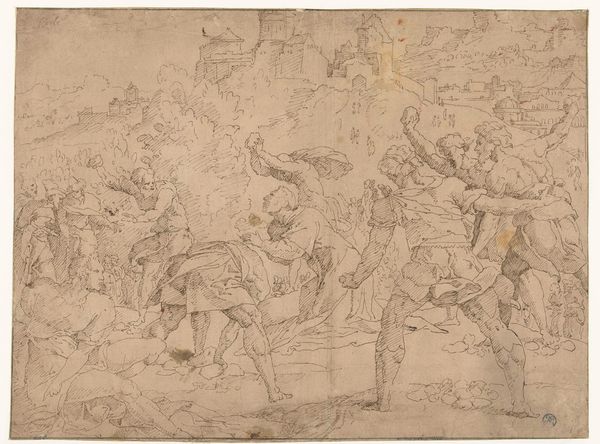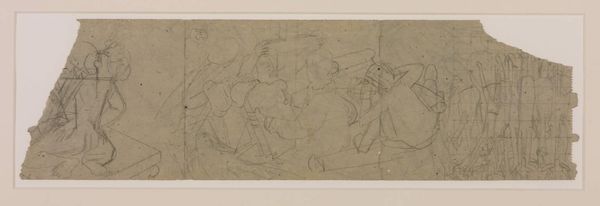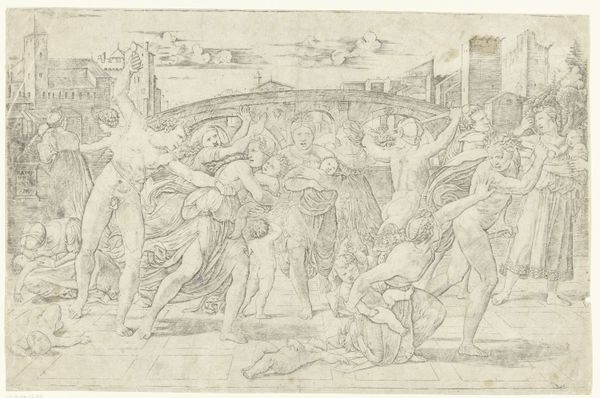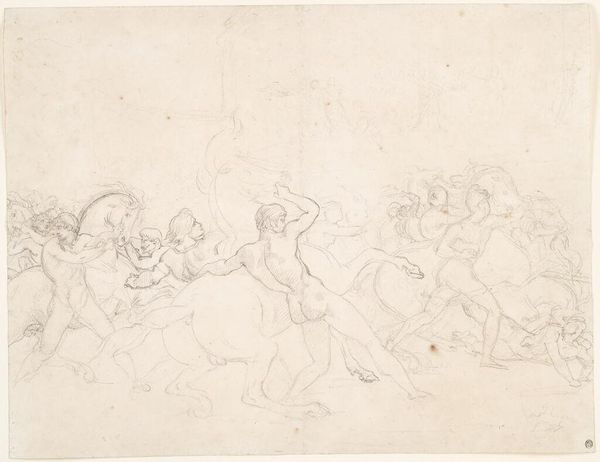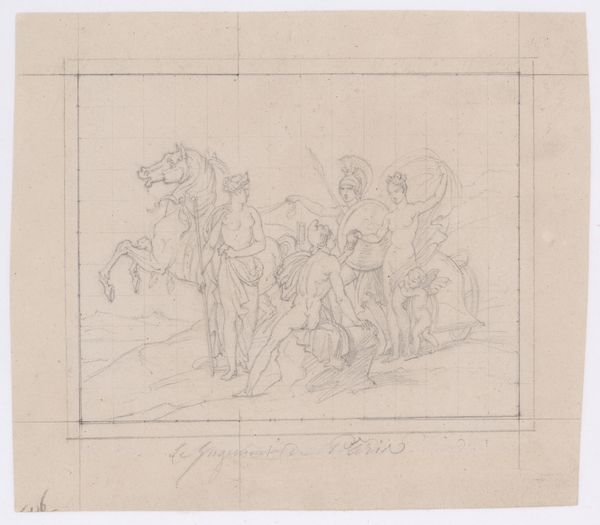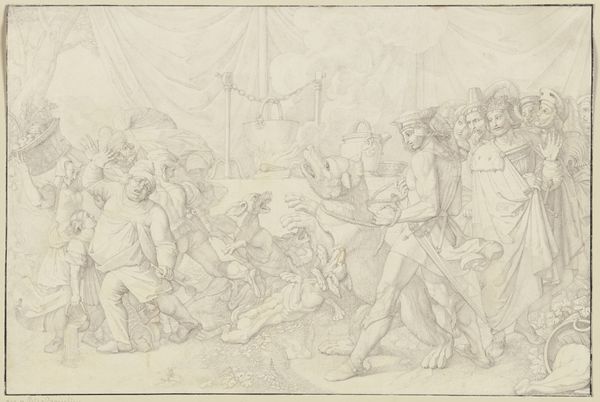
drawing, pencil
#
drawing
#
figuration
#
pencil
#
history-painting
#
academic-art
Copyright: Public Domain: Artvee
Curator: Looking at this preliminary drawing by Józef Simmler, titled Szkic kompozycji 'Męczeństwo św. Marka' – or "Sketch of the Composition 'The Martyrdom of Saint Mark'" – and created sometime between 1860 and 1867, I'm struck by the rawness of the scene, its inherent violence even in this skeletal form. Editor: Yes, it’s immediately arresting. There’s a frantic energy conveyed through those gestural lines and the sheer number of bodies crammed into the composition. It speaks volumes about mob mentality, that loss of individual responsibility within collective violence. Curator: It's interesting that you mention the lines because for me the material aspect is important. Here we can analyze the drawing in pencil. The underdrawing is clearly visible with the grid, the whole speaks of labour behind the canvas. What can this mean for the artist's studio practices? Editor: Certainly, seeing the underlying grid reveals Simmler’s methodical process and speaks to academic conventions and studio work. But I think that foundation emphasizes the vulnerability of the figures, laid bare both physically and in terms of their socio-political standing. Who is at the top, who has a chance, and what are these compositional techniques actually contributing in terms of messaging? Curator: I agree with your insight on class issues. We cannot overlook this very preliminary aspect of artmaking and what it entails socially and politically. By displaying the underdrawing, he is revealing to us the effort behind and the access one needs to make paintings or other historical images. Editor: And how does that inform the reception and consumption of these historical narratives? Who is being represented and how are they being represented, and for whom? Simmler, intentionally or unintentionally, created an early-access view to social themes, such as race, martyrdom, persecution... The faces! They all look very distressed, as if pleading to something beyond themselves for freedom from social injustices and oppression. Curator: That's an interesting viewpoint; It forces a different layer of consideration for materials, where materiality alone might miss relevant sociopolitical topics that inform it. I leave pondering that concept. Editor: Indeed. Thank you for highlighting the role the drawing style plays, not just as a visual piece, but as an act of cultural engagement and perhaps even social criticism. It allows us to question traditional narratives embedded in art history, promoting empathy, reflection, and awareness about social structures.
Comments
No comments
Be the first to comment and join the conversation on the ultimate creative platform.
